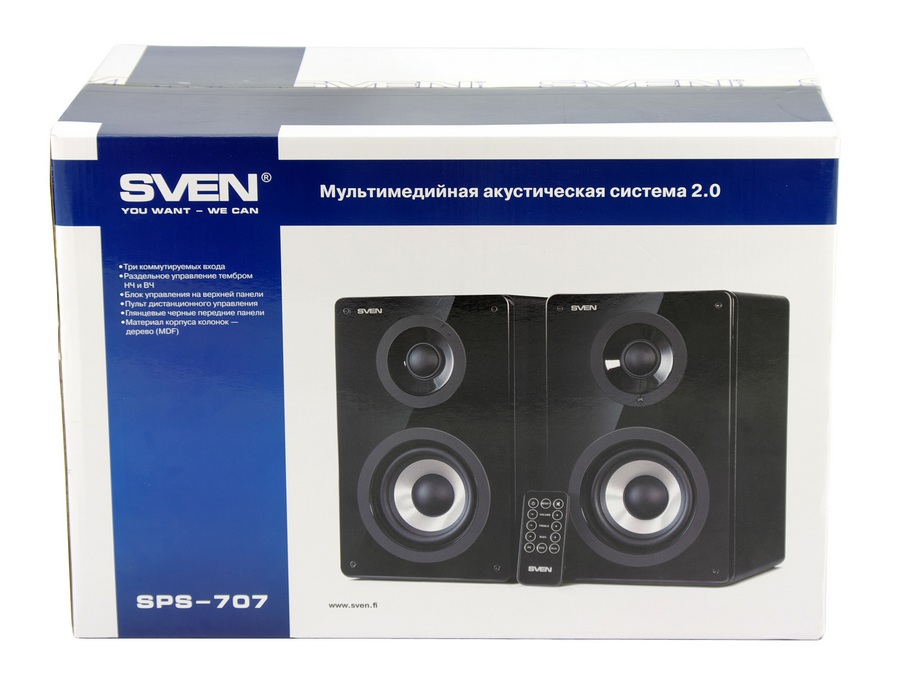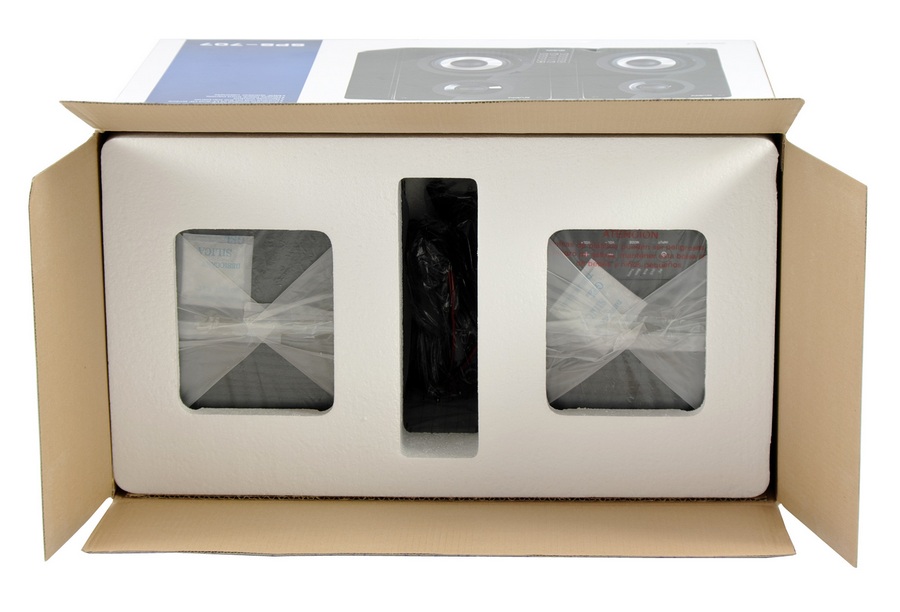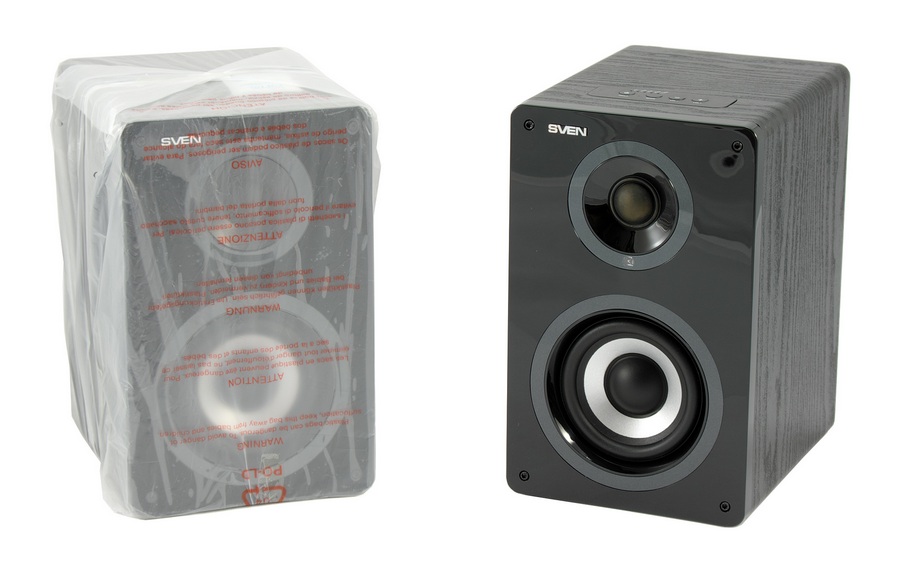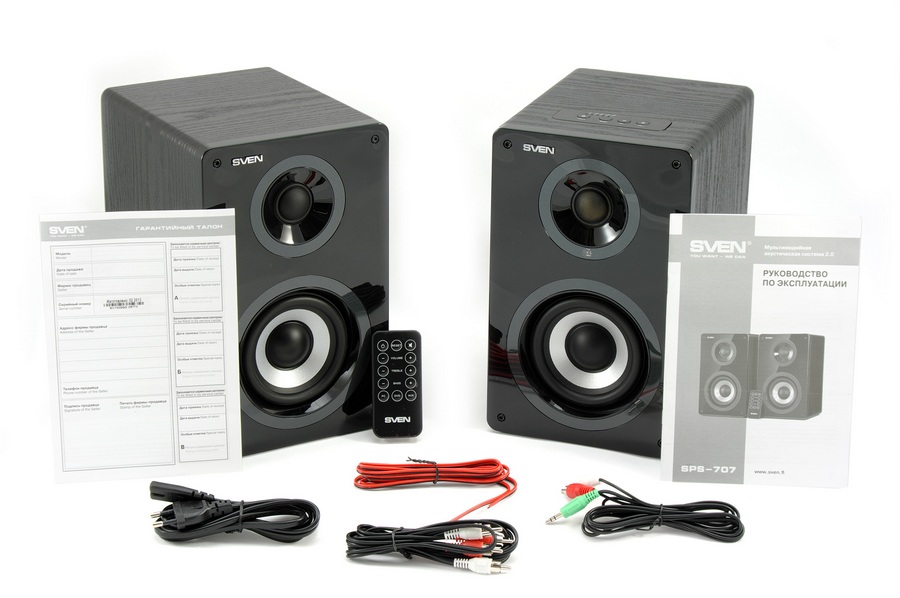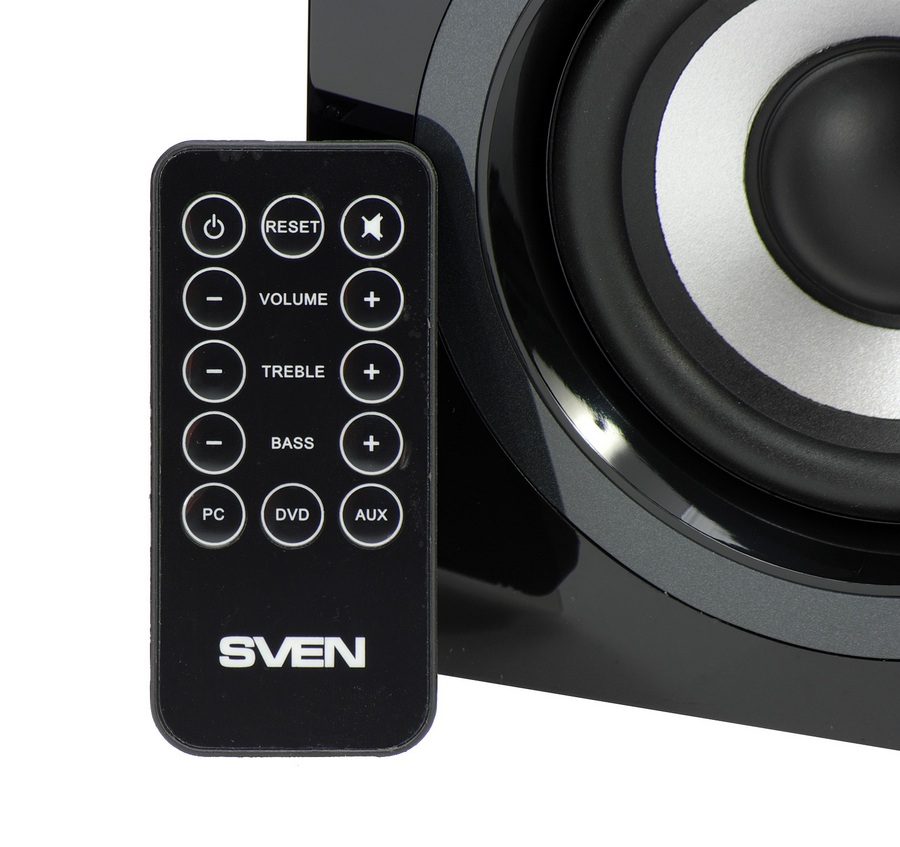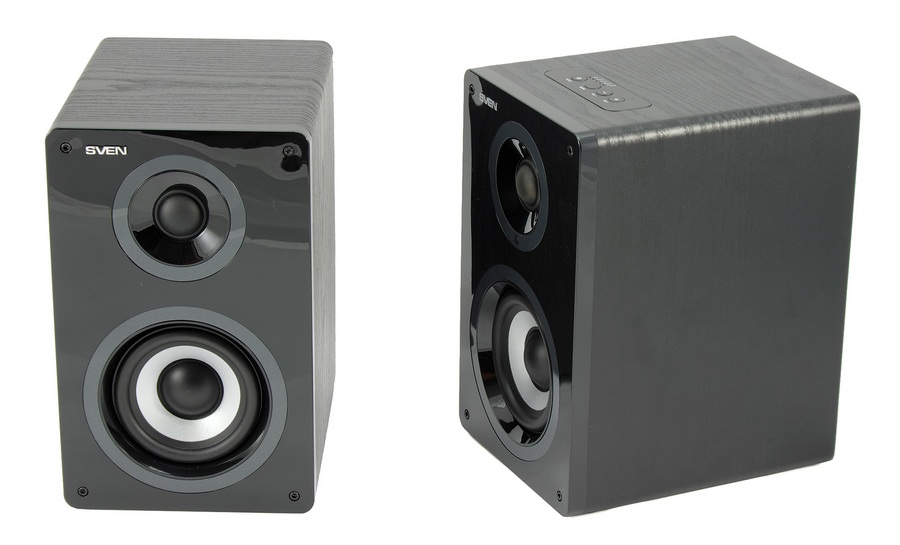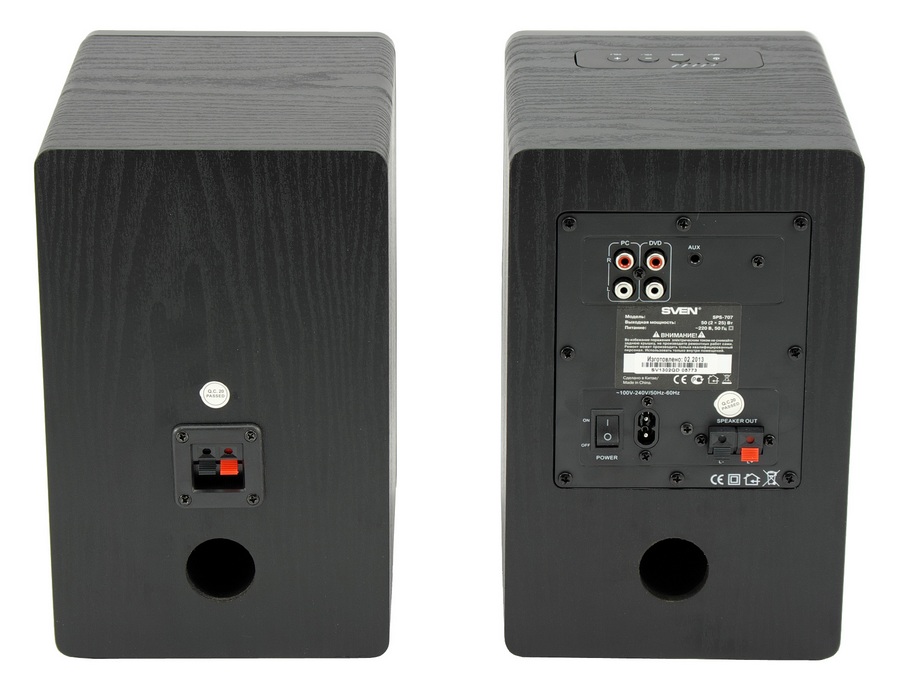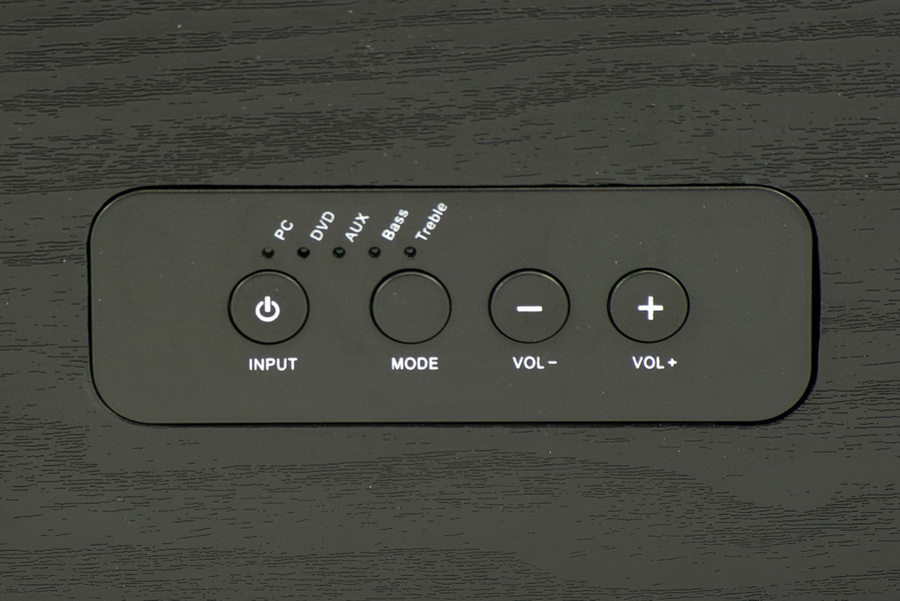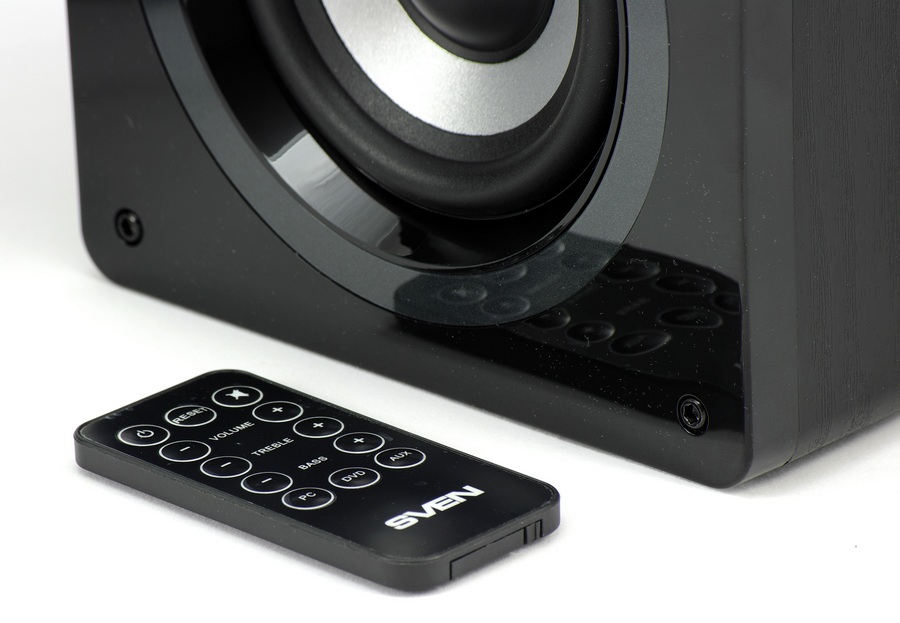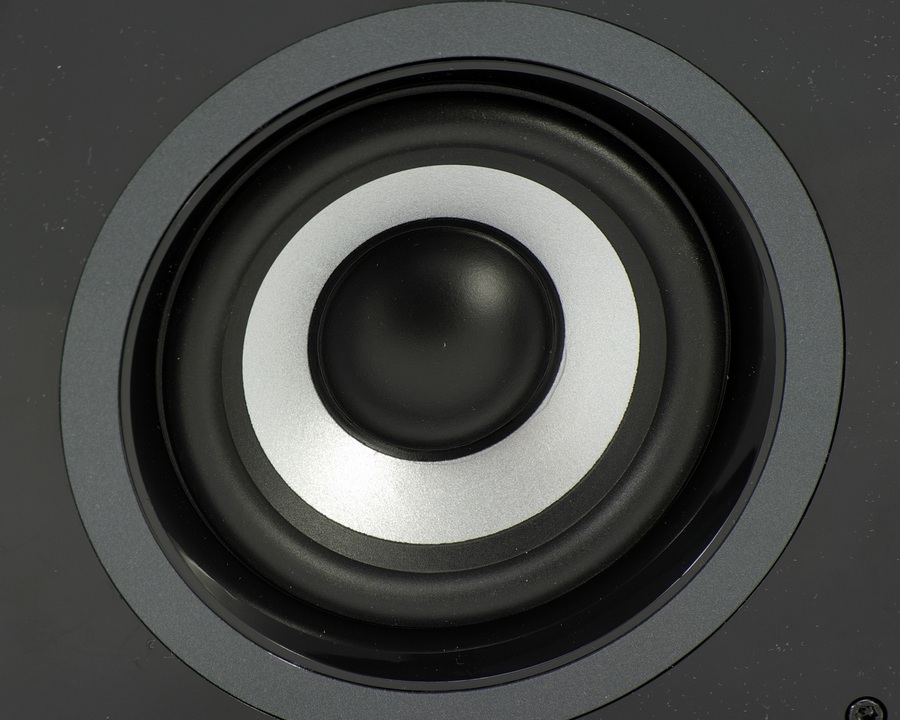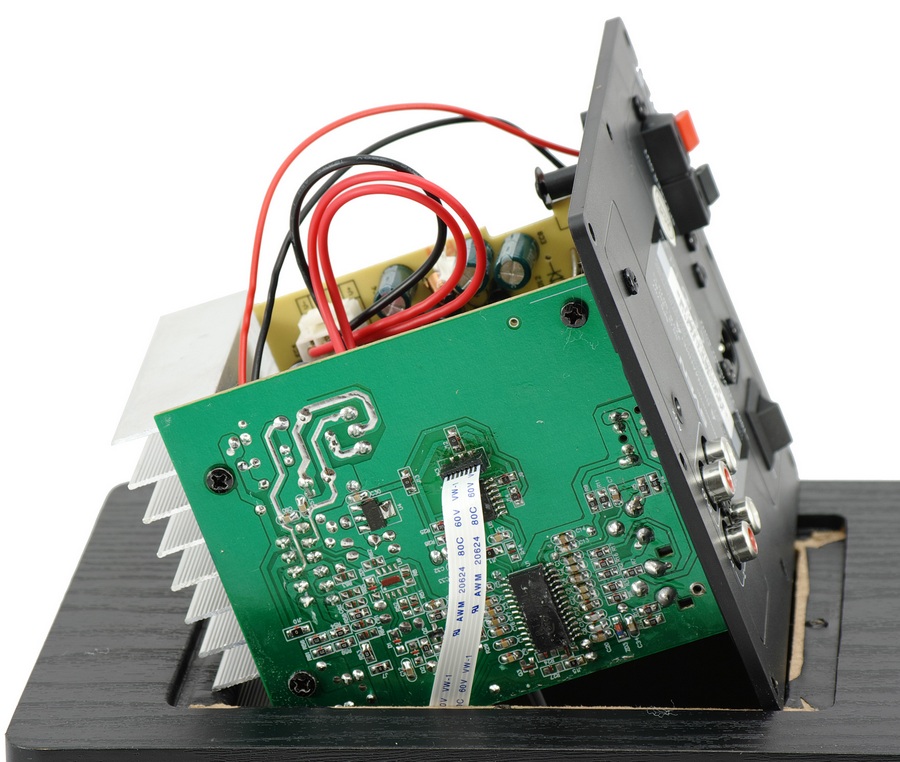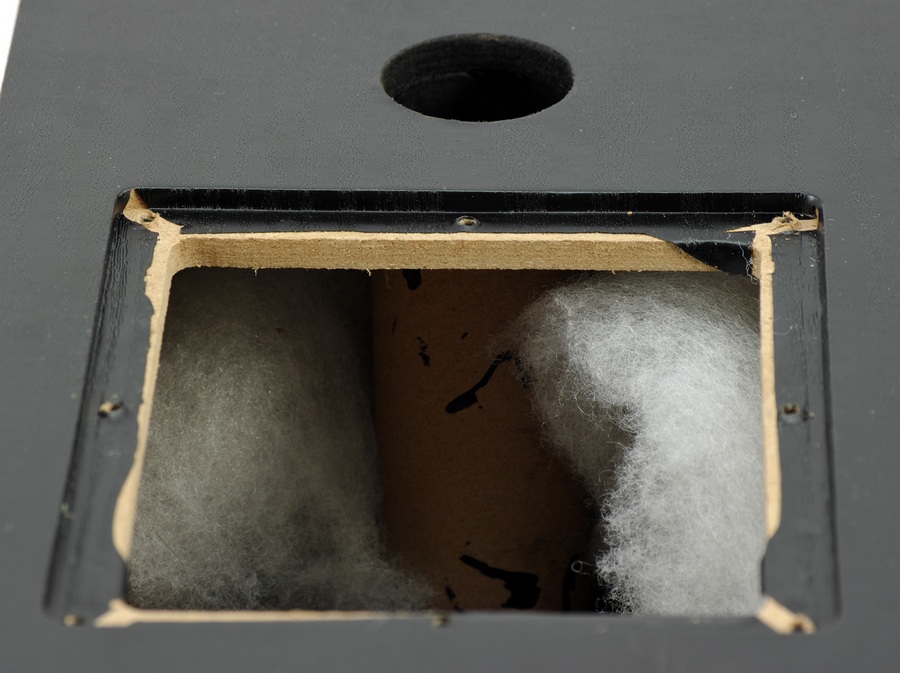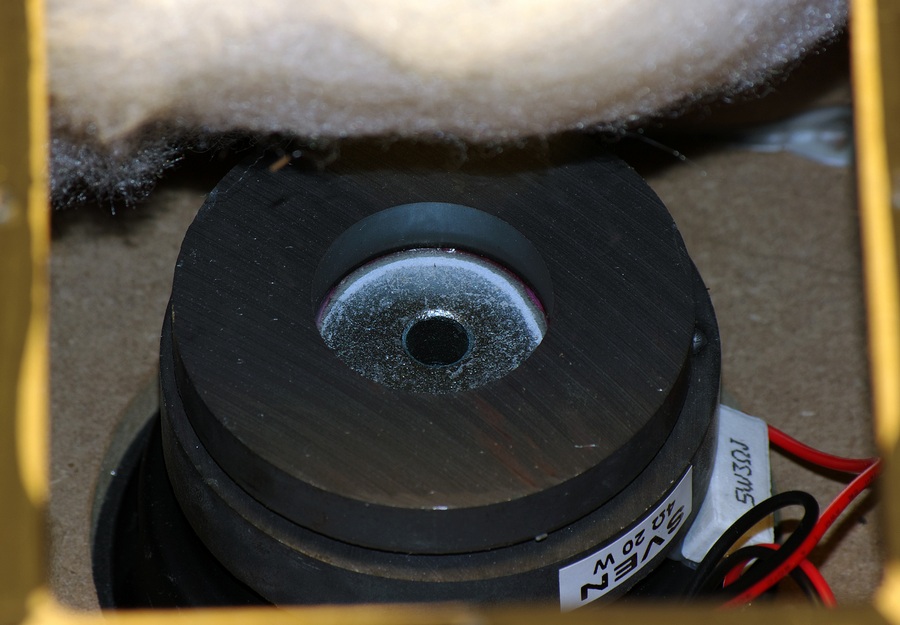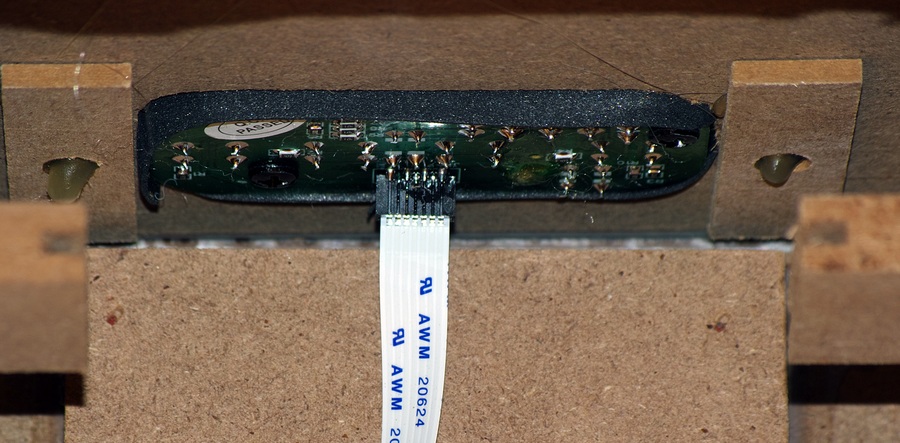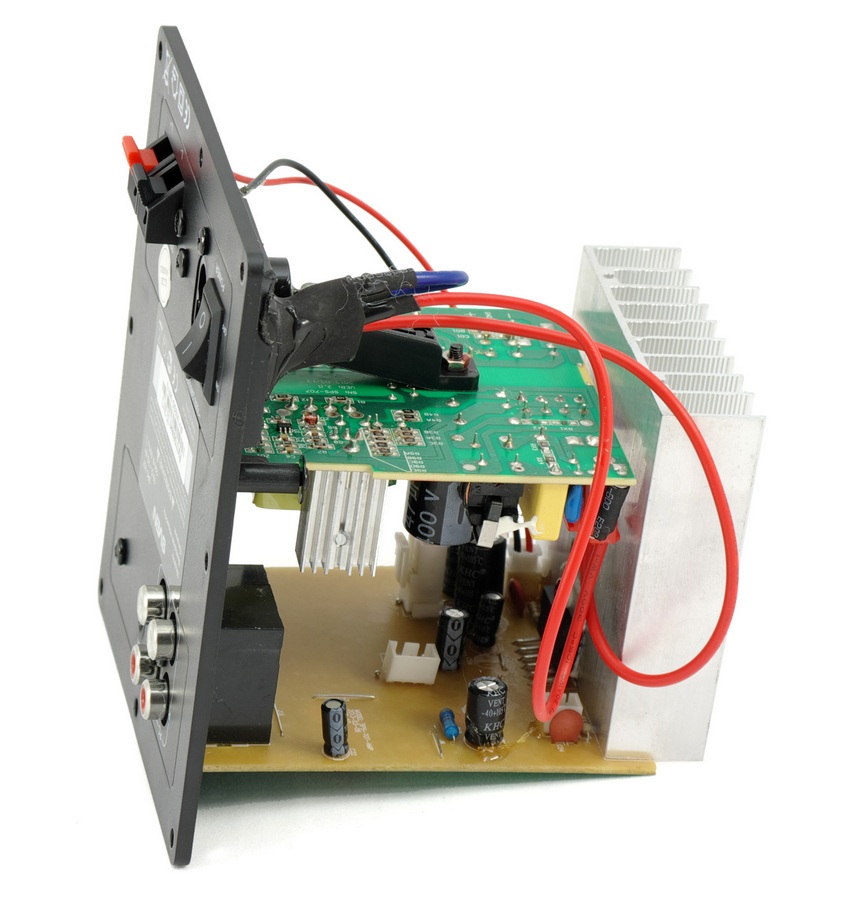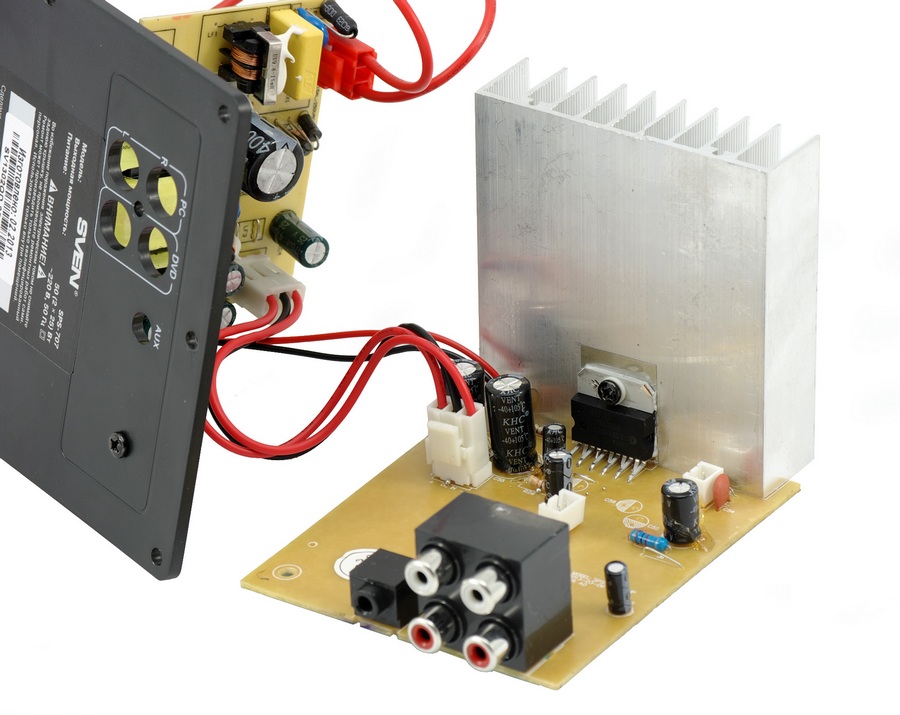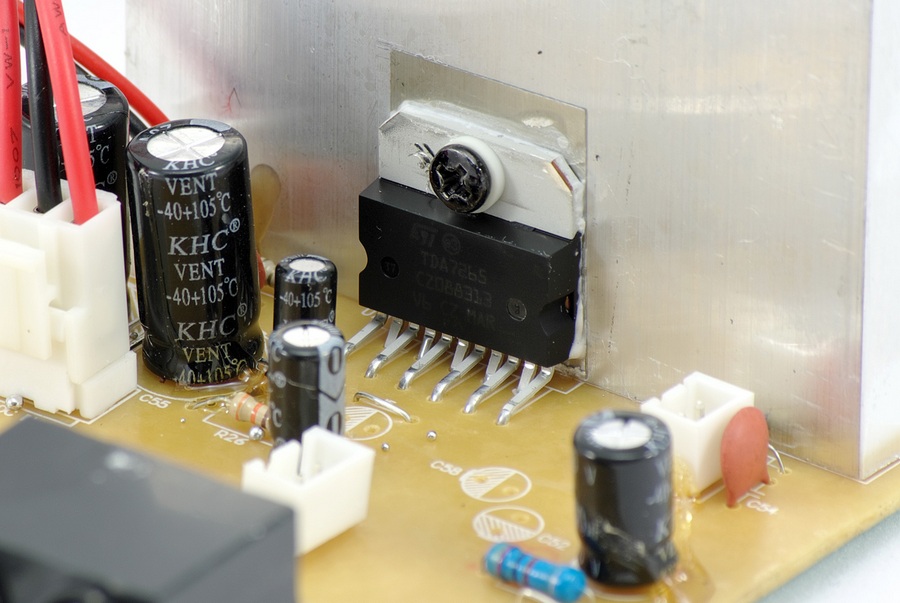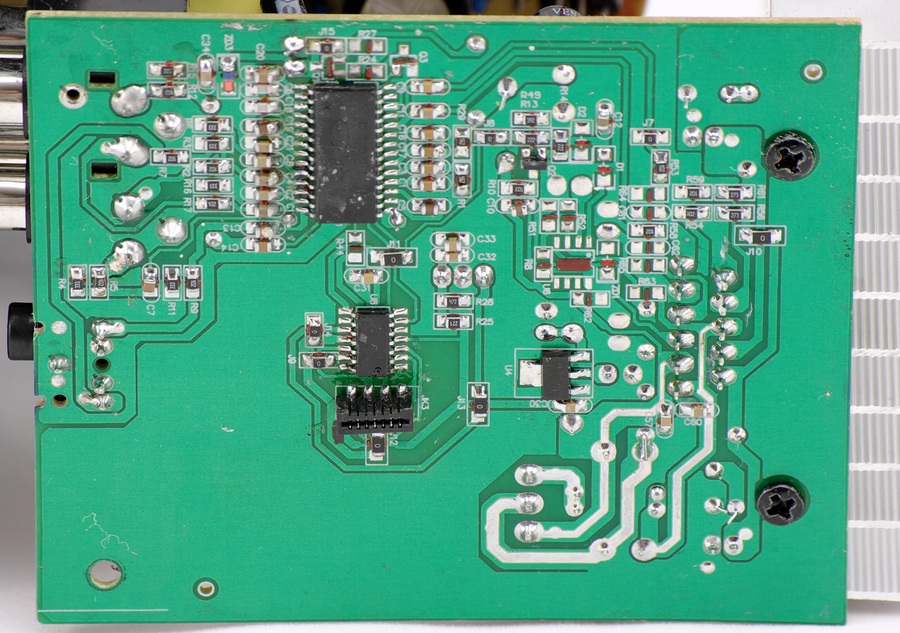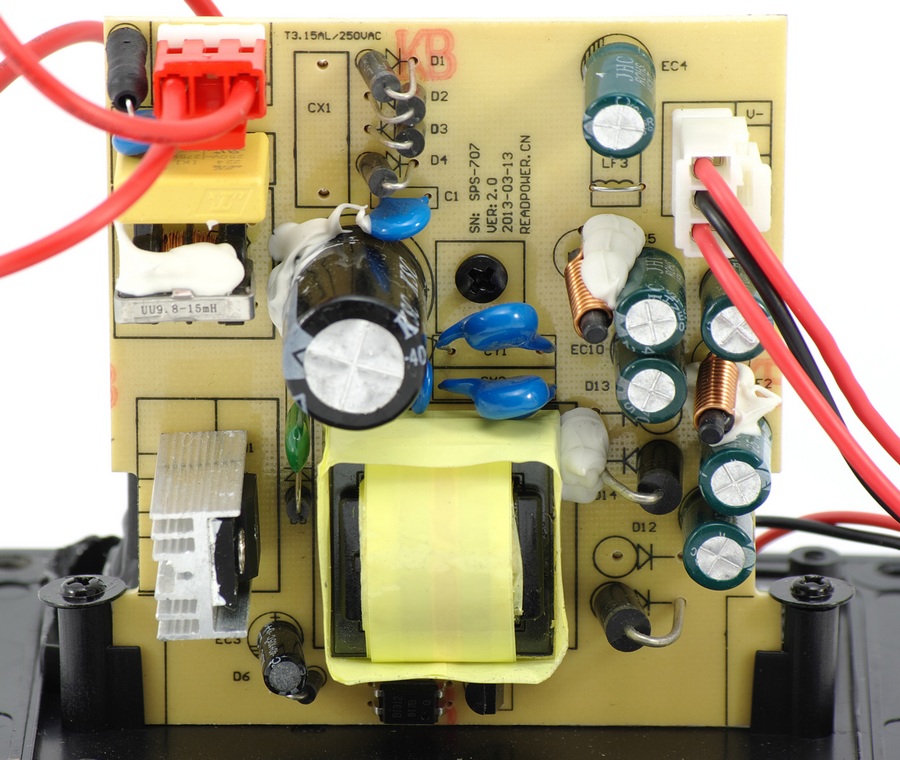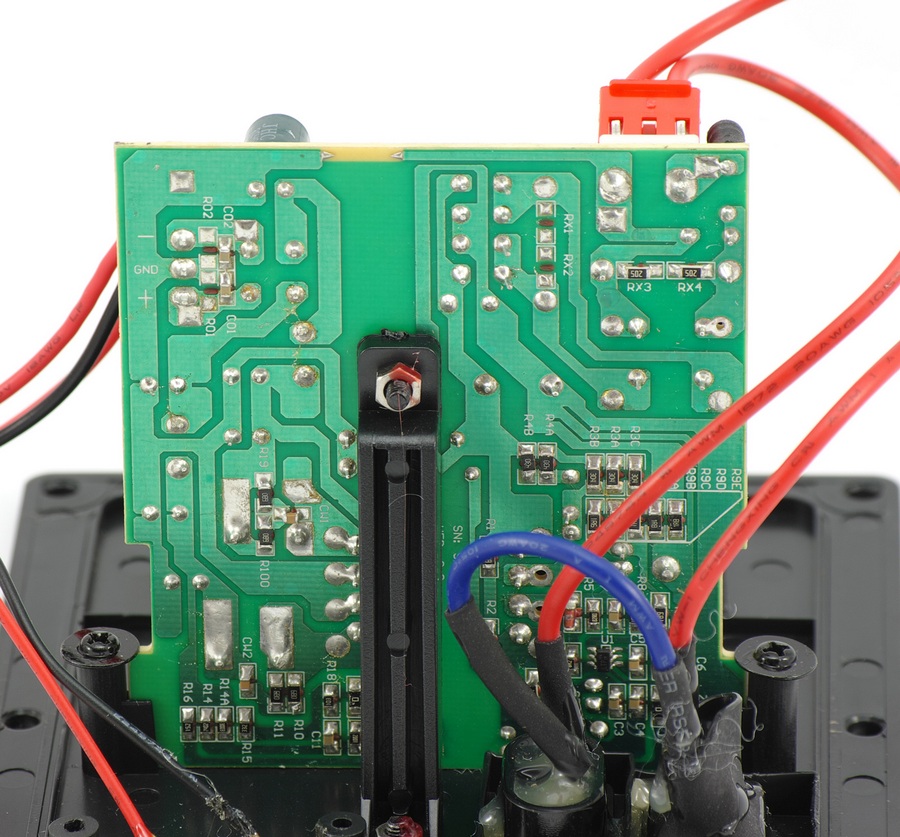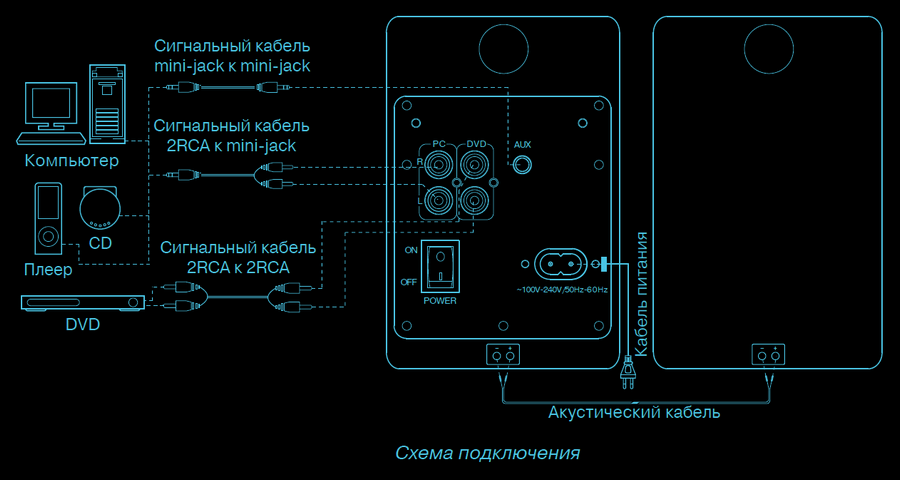SVEN Company was registered in 1991. As of today, it has its official representative offices in 50 countries of the world. Sven Company is a multinational structure concentrated on development and production of many types of electrical equipment. Multimedia and portable speaker systems, as well as computer periphery devices, such as keyboards, headphones, headsets, hold a central position among them.
Production capacities of the Company are concentrated in Taiwan and in the PRC and that enables to offer competitive prices to users. That is the reason that SVEN’s products are constant in demand with custom. Another greater plus for users is the fact that more than 200 official service centers have been opened in the territory of the Russian Federation.
Today we are testing a new SVEN SPS-707 multimedia speaker system. It is so-called classic 2.0 system, i.e. there are two stereo channels, without a subwoofer, as well as there is a wireless remote control in the package.
Package
SVEN SPS-707 speaker system is supplied in an attractive glossy carton with the colored printing; the package top is taped with the proprietary Scotch tape. Package dimensions are 430 x 245 x 300 mm.
There are pictures of the speaker system on both carton sides, as well as the description of its useful properties, i.e. the availability of three switched inputs, wooden (MDF) speaker cases, separate control of LF and HF timbre, a control unit on the top panel, glossy front panels and the remote control., on a few languages The speaker system multilingual specifications and its serial number are given on one of butt ends of the carton. The content of the package and the information about a producer and importer is described on the last side. Speakers are fixed in the carton very reliably with foam plastic forms, every column is individually wrapped in a plastic packet and every cable is also packed into an individual packet.
Appearance and the package
In this photo one speaker is shown in the packed condition, and the second speaker is shown without a packet and with the removed polyethylene tape, which protects the glossy front panel against accidental scratches and fingerprints.
The unpacked speakers look very attractively: they are decorated with black veneer sheet, and the design of loudspeaker cones is complemented the total favorable impression.
The whole package content is given in this photo, namely:
- Speakers – 2 pcs
- Аudio cable 2 m long – 1 pc
- 2RCA to mini-jack signal cable – 1 pc
- 2RCA to 2RCA signal cable – 1 pc
- Power cable – 1 pc
- Remote control – 1 pc
- AG10 type batteries installed into the remote control – 2 pcs
- Operation manual – 1 pc
- Warranty card – 1 pc
The only thing that is not included in the package is a mini jack – mini jack cable, it should be purchased separately to connect a player.
The remote control to control SVEN SPS-707 speaker system is very small, the producer also sticks the protective tape on its face, which can be removed later. Separate buttons have all necessary setting and switching functions, what is very convenient. The remote control distance range is up to 7 meters in line-of-sight. The infrared sensor window is located on the lower edge of the framework of the high-frequency loudspeaker of a speaker with the amplifier; therefore, it is desirable to aim with the remote control in that direction.
To avoid the batteries discharge, when the speaker system is in the retail trade system or stored at the warehouse, the producer inserted a special insulating gasket inside the remote control, which should be removed from the battery compartment to contact the batteries with a coll-ring plate. In the company’s User's Manual of this speaker system, which we downloaded at the official site, it is indicated that one 2032 type lithium element 3 V is used as a power supply source of the remote control, but when we opened the battery compartment we found two AG10 small batteries. By the way, to open the compartment you must press at first (toward the remote control center) on a little plastic locking pawl located on one side, and only then pull a cassette with batteries outside.
Speakers are assembled rather with high quality, there are no unnecessary gaps or loose screws, as well as there are no burrs or scratches.
The speakers rear view. The left speaker in the photo is the passive one; it is connected with the help of twin core cable observing the polarity (to keep right phasing) to the spring-load terminals on the power amplifier output of the active speaker. There is the phase inverter opening on the rear surface of each speaker. For this reason the producer recommends to put speakers in the distance no less than 30-40 cm from the wall, it can create a problem for persons who want to place speakers very close to the wall.
Terminals of such type are often used in inexpensive speaker systems and audio amplifiers. Rear view of the active speaker panel with the amplifier.
There is a power connector, terminals to connect a cable going to the second speaker, ON/OFF switch, two linear inputs with RCA jacks to connect a PC or DVD player and additional AUX input with the mini jack designed to connect a pocket player. Of course, a user can connect any sound source to these inputs.
There is a button control panel on the active speaker top, which duplicates by its functions the possibilities of the wireless remote control. It can be useful in case of the sudden battery discharge of the remote control or after its loss. To say the truth the control from there is more difficult due to small number of buttons, but it is intuitional and with the help of the User’s Manual it is mastered literally for one minute.
SVEN Company equipped the bottom of speakers with rubber legs. They are low, but must decrease possible parasite resonance being transferred by speakers to the surface where they stand.
We offer to see a few pictures of SVEN SPS-707 speaker system and the remote control. As it has been already said, the front surface of speakers is glossy; it effectively attracts specks of dust and fingerprints, but it is also wiped easily, especially with anti-static cloth.
The high frequency loudspeaker, according to the producer, has a silk cone 25 mm in diameter, but the glossy surface is used, most probably, for the design only. The low frequency loudspeaker is 115 mm in diameter, and that is not so big for the qualitative reproduction of low frequencies, however it will be better to estimate this during listening.
Looking inside
The review won’t be quite complete, if we do not know what is there inside speakers, therefore let us conduct “dissection” of a speaker with the amplifier. To do this you have to unscrew 8 screws along the perimeter of the speaker rear panel. Practically the whole electronic stuffing is removed at once, only a flat loop and two cables with connectors prevent to extract the electronic unit entirely. The unit can be removed after disconnecting the loop and two cables.
Speaker cases are really wooden (MDF), the phase inverter pipe is made of MDF also, but only it is thicker. The slipshod located piece of sound-absorbing material caught the eye at once. It is not enough to fill the whole speaker, and it does not cover the phase inverter pipe as well.
The low frequency loudspeaker is visible, but the high frequency loudspeaker is closed from inside with the fixed MDF panel. There is a sticker on the low frequency loudspeaker with SVEN inscription and specifications – 20 W and 4 Ohm. An additional 5 W resistor with 3 Ohm impedance is visible close to the loudspeaker.
A small board with LEDs and commutation buttons is placed under the active speaker cover. A seven-conductor loop goes exactly from it to the power amplifier board.
Now the most interesting things are in store for us: SVEN Company renounced the use of the transformer power unit in speakers and applied a pulse unit block. By this it killed several birds with one stone, among which there is very old one, namely, the low frequency background noise of alternating current in speakers was eliminated, which was recently audible in separate models of SVEN speakers in the absence of signal, for example, in SVEN SPS-699 speaker system. At the same time now the power unit became lighter, more economical and powerful. Unfortunately, for the present, we can say nothing regarding the reliability of a similar power unit, but similar units operate in computers and TV sets for years.
The power amplifier board visually looks very simple, but many components and several microcircuits are placed from the side of printed conductors. The power amplifier microcircuit is placed on an aluminum radiator, which cannot disperse a lot of thermal power potentially, especially taking into account that it is entirely located inside the speaker case.
As you can to see in this photo, the high-quality TDA7265 amplifying microcircuit, which is the AB class amplifier produced by ST Microelectronics, is used in the power amplifier. Its price is approximately $10. Its main specifications:
- Number of channels: 2;
- Output power, W: 2 x 25;
- Supply voltage, V: ±20;
- Case type: SQL11;
- Load voltage, V: ±16;
- Load resistance, Ohm: 8;
- Supply voltage type: bipolar.
The PT2313L microcircuit of four channel audio processor is soldered on the back side of the board, It is responsible for regulation of timbre and amplifying, as well as for commutation of three sources of input signal. Its cost is approximately USD 2-3, depending on the delivery amount. There is also a microcircuit with marking, which we did not succeed to discern, it is responsible for the buttons and LED indicator operation.
The quality of the printed board manufacture of the amplifier is quite good, but soldering in places leaves something to be desired. Not washed flux remains and some twisted open-frame components are visible.
There are two spare places for LED indicators on the board of the pulse power unit, and a fuse is soldered directly into the board, therefore, in case of its blowing it can be repaired in a service center only. A power element (transistor) is placed on a small aluminum radiator.
Printed board soldering is more qualitative than the board soldering of the amplifier, probably the power units are purchased ready-to-use from another Chinese company (Readpower.cn).
Connection and testing
Connection of speakers causes no problems and is carried out according to a diagram provided in the User’s Manual.
There is no indication of volume and timbre levels in speakers, therefore users will have to depend on LED displays, showing that the adjustment has reached to the limit, as well as aurally.
After switching on the ON/OFF switch the speakers are in the stand-by mode, consuming the minimum of power, the RS LED lights red. If after that you will press the switch on button on the remote control or on the speaker, the LED indicator changes the light color to green, indicating a chosen sound input for listening. When the INPUT button is pressed short, the inputs will be consistently commuted. By short pressing the MODE button you can select the timbre changing at low or high frequencies, at that the proper LED indicator will light up for a short period of time, and then it will go out.
The switched on speakers will produce scarcely audible high frequency rustle, and it is audible, if you approach close to speakers only when there is no sound signal. During the MUTE mode switching on there is smooth transitional process of not very high amplitude in loudspeakers, which aurally is not a sharp click.
Because we did not have special equipment and a room to measure gain-frequency characteristics (GFC) of speakers, we used signals taken from a diagnostic CD for checking Hi-Fi path of the speaker system to determine the lowest reproduced frequency. A computer with the installed Creative Audigy 2 sound card, as well as Pioneer DV-355 DVD, playing audio CDs, were used as sound signal sources.
The producer declared 45 Hz as the lowest frequency and it was true. A test signal with 40 Hz frequency sounded confidently, 31.5 Hz frequency was also audible, but with less amplitude. High frequencies sound unobtrusively without metal overtone.
Loudspeakers in SVEN SPS-707 speakers gladden by their high sensitiveness – even with small volume they provide the whole spectrum of frequencies gladdening with the realistic sound. The detail and purity of the vocal in “Tonight” composition by Charlotte Church made us happy for a while. “Threedledum” composition by Bruce Dunlap sounded very soft and shrouded, the bass song in a deep voice, and the guitar created the atmosphere. We liked the sound in “Quiet Nights Of Quiet Stars (Corcovado)” by Ella Fitzgerald and “Beyond The Sea (La Mer)” by George Benson…
Marches performed by brass bands sounded perfectly. But the organ sounding was the real sound discovery in these speakers – sounds go neatly and undistorted. Of course, the depth is not enough in the lowest registers, but, nevertheless, there is feeling of finding yourself in an organ hall. In general, sounding of acoustic instruments gladden very much – a piano, percussion, flute, violoncello, saxophone, harp, fanfares, oboe, mouth organ... We did not like a little the sounding of wind instruments. They sounded somehow rather “dirty”, but maybe it was a subjective sensation. Electronic musical instruments also sounded perfectly – Khammond’s organ, an electric guitar. Listening of old tracks, for example. Tommy Dorsey & His Orchestra (Vocal Jack Leonard) “All The Things You Are”, returned us to the days of “warm”, lamp sound and radio receivers.
Popular music also sounded quite well, with resilient, energetic the bass notes and distinguished middle frequencies. Particularization of the general sound picture was not worsened, the voice of soloists on the music background was sounded distinctly.
Music playback at all volume levels, except the highest, goes quite qualitatively and pracrically without audible distortions. If the volume is near to the maximum, the speakers do not simply get along with the sound pressure, they begin to choke – they foremost do not have the case volume.
On the whole, however, one is under the impression that SVEN SPS-707 is really pegged at rows of not very rich good music lovers. Just the good music. And they certainly can find their refuge there. Because at low and middle volume the speakers sound splendidly! Their sounding is very similar to sounding of small studio monitors designed to control sound by a sound control supervisor. Naturally, the whole advantage of good sound is uncovered only with the use of non-compressed or compressed without losses of musical tracks.
We also listened to several tracks with sounds of the surrounding world. A flying turboprop airplane sounded very truly, there was the feeling that it flew outside the opened window and there was even vibration similar to the glass drumming noise. Striking sounds of a clock, sounds of the thunder (the depth was not enough to it), roar of the surf, noise of automobile engines – everything sounded quite well.
It is precisely during the listening of SVEN SPS-707, it come back to memory that music is diversified and great. The speakers undoubtedly can please jazz buffs, lovers of classical music, easy listening style and instrumental compositions.
Advantages:
- Very pleasant sound;
- Adequate price;
- Qualitative workmanship and pleasant design;
- Availability of the remote control and several sound inputs.
Conclusion
You can’t expect from such a small and inexpensive speaker system the sound similar to speaker systems and amplifiers at a price of thousands of dollars, but all the same we want to say that SVEN SPS-707 speakers undoubtedly turned out well.
We can recommend purchasing this system for everybody, who can take the liberty expensive equipment, but loves the music. It is also recommended for the owners of modern TV-sets with “none” speaker sounding. Being connected to the headphone output it is able to satisfy with the sound of an ordinary user completely, who is not spoiled by 5.1 surround-sound systems.

